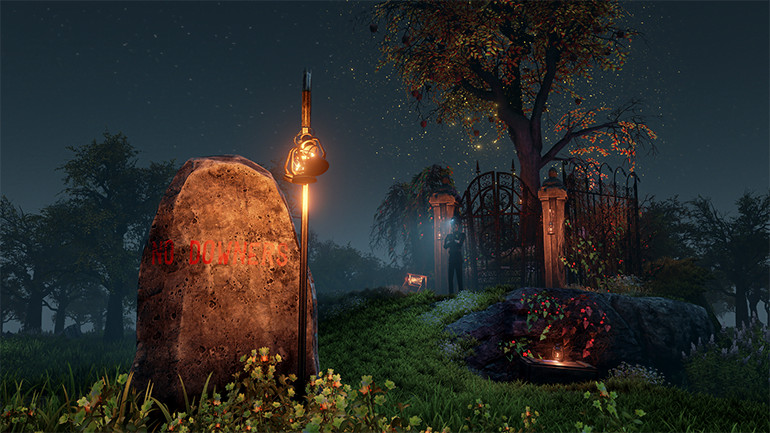Compulsion Games recently opened up early access for their highly anticipated We Happy Few across PC and Xbox One. The game dives into the setting of Wellington Wells; the story follows protagonist Arthur Hastings as he struggles with the socially decrepit remains of a post-war era. As a way to cope after doing “A Very Bad Thing”, inhabitants take small pills called Joy to forget the hardship that they would need to face. For those that don’t take their Joy, they are Downers. And nobody likes a Downer.
The game holds a lot of promise for fans of Compulsion Games. Built in the Unreal Engine 4, much of the stunning graphics and smooth gameplay is attributed to the suite of development tools. In fact, to celebrate the early access release of We Happy Few, Unreal sat down with Provost and others from Compulsion for an interview about the game’s development. The company has come a long way since their first game created with Unreal. The UE3 game development tools brought to life their film-noir Contrast, a game highly focused on the direction of using light to maneuver through puzzles and platforms.
The company has come a long way since their first game created with Unreal. The team initially started with only seven members. To recruit more developers, Provost used the most common game development tools available to widen his search. The Unreal Engine 3 breathed life into their film-noir Contrast, a game highly focused on the direction of using light to maneuver through puzzles and platforms. The difficulty of overcoming the switch between light and shadow for Contrast was a gateway to the engine’s source code. That success is what encouraged Compulsion to move forward towards Unreal Engine 4 for their next project, We Happy Few.
“UE4 is vastly better than UE3. It no longer has script code. Instead, it has super-powerful visual Blueprints that make every programmer on my team nauseous at the idea of what kind of damage artists and level designers might do to our performance or stability. It puts the onus on us to make sure we divide functionality between disciplines, and it gives me the flexibility to fix something in design instead of with programmers.”
The flexibility of UE4’s source code came with challenges of its own. The constantly changing world in We Happy Few was a difficulty that Provost was willing to tackle, and he couldn’t have done it without that source code. Saving the game’s procedurally created worlds and loading assets into generated layouts was met head on. Players are also able to craft and create throughout the game from mundane mixtures to aesthetic outfits. After all, nobody wants to look like a Downer. UE4 played a major part in rendering the effects of environment on these and much of the game’s environment from upbeat to eery.
“There’s no crystal ball for picking an engine,” Provost continues. “A lot of things factor into the decision.” But for a team like Compulsion, UE4 is just right. “As people who value great content tools as well as the ability to pop open the hood of the car and mess around in there when we need to, we’re very happy with our choice.”
The full interview can be read on Unreal Engine’s blog. Don’t forget to take your Joy! Make sure to check out the early access for We Happy Few as it continues to develop.
[Source:- Winbeta]






